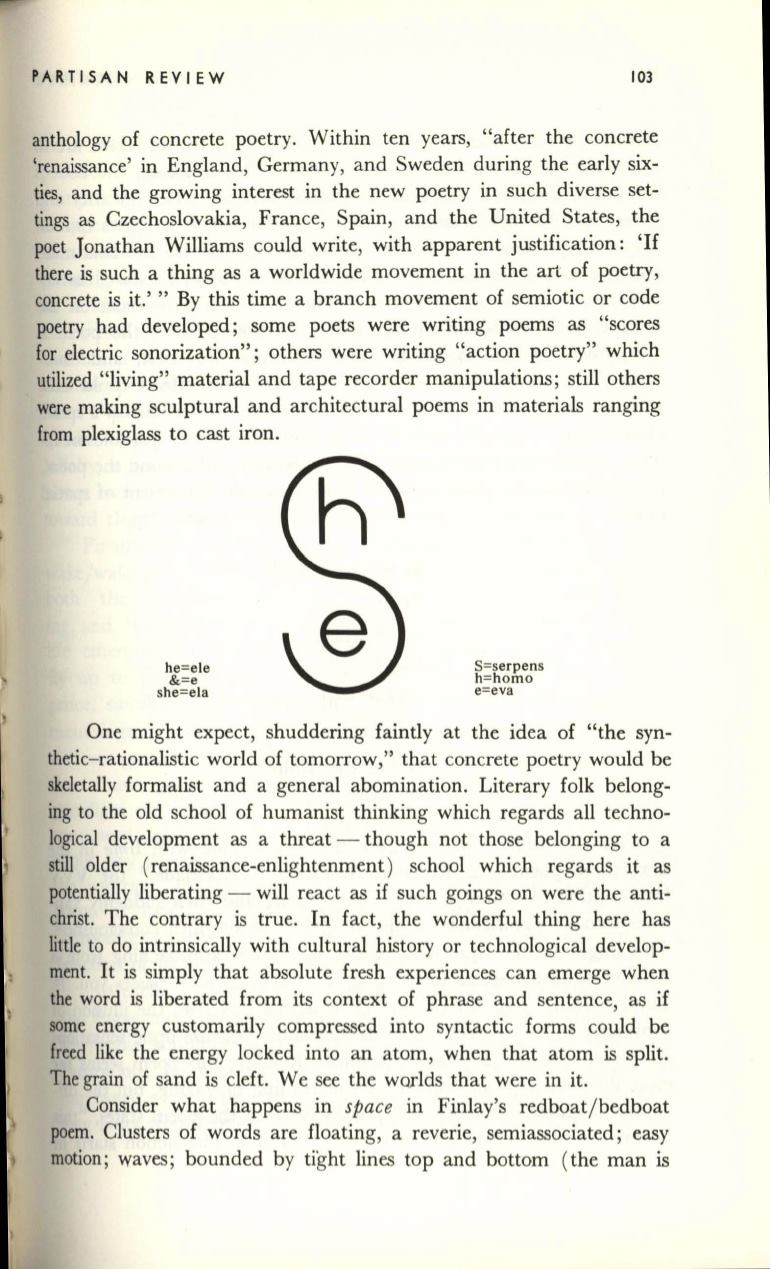
PARTISAN REVIEW
103
anthology of concrete poetry. Within ten years, "after the concrete
'renaissance' in England, Germany, and Sweden during the early six–
ties, and the growing interest in the new poetry in such diverse set–
tings as Czechoslovakia, France, Spain, and the United States, the
poet Jonathan Williams could write, with apparent justification:
'If
there is such a thing as a worldwide movement in the art of poetry,
concrete is it.' " By this time a branch movement of semiotic or code
poetry had developed; some poets were writing poems as "scores
for electric sonorization"; others were writing "action poetry" which
utilized "living" material and tape recorder manipulations; still others
were making sculptural and architectural poems in materials ranging
from plexiglass to cast iron.
he=ele
&=e
she=ela
S=serpens
h=homo
e=eva
One might expect, shuddering faintly at the idea of "the syn–
thetic-rationalistic world of tomorrow," that concrete poetry would be
skeletally formalist and a general abomination. Literary folk belong–
ing to the old school of humanist thinking which regards all techno–
logical development as a threat - though not those belonging to a
still older (renaissance-enlightenment ) school which regards it as
potentially liberating - will react as if such goings on were the anti–
christ. The contrary is true. In fact, the wonderful thing here has
little to do intrinsically with cultural history or technological develop–
ment. It is simply that absolute fresh experiences can emerge when
the word is liberated from its context of phrase and sentence, as if
some energy customarily compressed into syntactic forms could be
freed like the energy locked into an atom, when that atom is split.
The grain of sand is
cleft.
We see the worlds that were in it.
Consider what happens in
space
in Finlay's redboat/ bedboat
poem. Clusters of words are floating , a reverie, semiassociated ; easy
motion; waves; bounded by tight lines top and bottom (the man is


